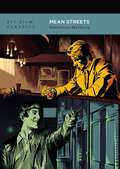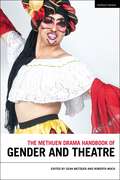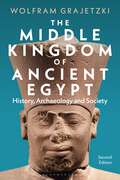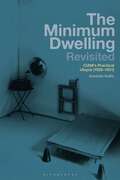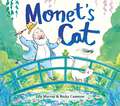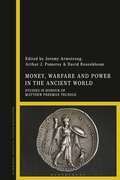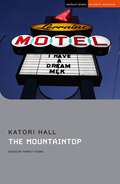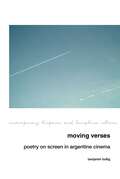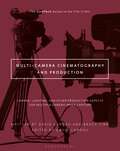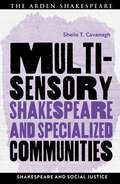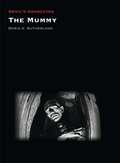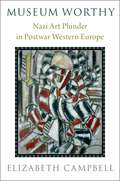- Table View
- List View
Mastering Adobe Photoshop Elements: Bring out the best in your images using Adobe Photoshop Elements 2024
by Robin NicholsTake complete control of all your image-editing ambitions using this beautifully illustrated, easy-to-understand, jargon-free guide on Photoshop Elements 2024 packed with best practices and expert insights.Key FeaturesComprehensive coverage of Adobe Photoshop Elements 2024, including new AI-powered tools and advanced featuresPractical guidance on photo organization, editing, and sharing, with an emphasis on creative and professional techniquesRich, illustrative content with updated examples, tutorials, and mini creative projectsBook DescriptionDive into the world of digital photo editing with this latest edition, crafted by Robin Nichols, a seasoned photographer and digital imaging expert, which brings the latest Photoshop Elements 2024 to your fingertips. With a unique blend of in-depth tutorials and practical applications, this book is an essential resource for photographers at all levels. It introduces new features like Dark Mode, Match Color, and Photo Reels, along with advanced techniques like layering and artistic effects. The book also addresses common user feedback from previous editions, ensuring a refined and user-friendly experience. Elements 2024 extends its AI capabilities by simplifying complex editing processes. Learn to stitch widescreen panoramas, remove people from backgrounds, de-focus backgrounds, re-compose images, and even create a range of calendars and greeting cards for your friends and family. Take your prowess to the next level by learning how to correct optical distortion, re-shape images, exploit layers, layer masking, and sharpening techniques—create the perfect picture or imaginative fantasy illustration. You’ll also learn the online realms of animation, video creation, and third-party plug-ins. By the end of this book, you'll learn how to leverage the incredible features of Photoshop Elements 2024 with complete confidence.What you will learnMaster new features in Photoshop Elements 2024, including AI-powered tools and one-click fixes on mobileCreate captivating photo collages, digital paintings, and graphic designsEfficiently organize your photo collections for easy access and managementEnhance your social media presence with professionally edited photos and artworksEmploy advanced layer techniques for more powerful and immersive illustrationsGain comprehensive knowledge to become a proficient Photoshop Elements userWho this book is for"Mastering Adobe Photoshop Elements - 6th Edition" is perfect for photographers of all skill levels - from hobbyists to professionals. Whether you are new to photo editing or looking to upgrade your skills with the latest Photoshop Elements features, this book offers valuable insights and guidance.
The Materials of Service Design
by Johan Blomkvist Simon Clatworthy Stefan HolmlidIf Design is about forming materials, then what are the materials of Service Design? In this ground-breaking book, Johan Blomkvist, Simon Clatworthy and Stefan Holmlid explore this question by establishing a discourse around the materials of service design, discussing materials as a means to study what service design is and could be.Exploring the contours and foundations of the field, this innovative book redefines the material and opens with an investigation of how service has been understood as a material in design. With insights from expert practitioners in the field, chapters then examine a vast library of materials, including social structures, touch-points, thinking, culture, time, organisations, conversations, data, human bodies and more. Making sense of this material mix, the book delves into the material of the immaterial and displays the diversified and expansive field of service design today. In doing so, it forms a starting point to go beyond reductionist ideas of the material-immaterial dichotomy and makes room for new constructivist perspectives.Contributing to the development of education within service design, this insightful book will be invaluable for practitioners and course leaders looking to navigate a new path to service design. Founded in design as a knowledge intensive practice, it will also be transformative for the research of students and scholars of marketing, service design, design theory, and innovation studies.
Mean Streets (BFI Film Classics)
by Demetrios MatheouMean Streets was Martin Scorsese's third feature film, and the one that confirmed him as a major new talent. On its premiere at the New York Film Festival in 1973, the critic Pauline Kael hailed the film as 'a true original of our period, a triumph of personal film-making'. The tale of combative friends and small-time crooks is set amid the bars, pool halls, tenements and streets of Manhattan's Little Italy. Scorsese has said of his childhood neighbourhood, 'its very texture was interwoven with organised crime', and this quality would dramatically inform the tone and restless energy of his seminal film.Demetrios Matheou's insightful study considers Mean Streets' production history in the context of the New Hollywood period of American cinema, noting also the key roles played by John Cassavetes and Roger Corman. He analyses the importance of Scorsese's background to the film's characters and themes, including preoccupations with guilt, redemption and criminal subcultures; the development of the director's film-making process and signature style; the way in which he both drew upon and invigorated the crime genre; his relationship with emerging stars Robert De Niro and Harvey Keitel, and the film's reception and legacy. Matheou argues that while Taxi Driver (1976) and Raging Bull (1980) are regarded as Scorsese's greatest films of the period, Mean Streets is the more influential achievement. With it, Scorsese not only paved the way for a new kind of crime movie, not least his own GoodFellas (1990), but also inspired generations of independently-minded film-makers.
Medieval and Renaissance Fashion: 90 Full-Color Plates (Dover Pictorial Archive Ser.)
by Raphaël JacqueminKnights clad in chain mail populate these pages, alongside crowned heads in royal regalia and common folk in their finest apparel. Scrupulously authentic in every detail, these images offer colorful portraits that span centuries of fashion, from the Middle Ages through the Renaissance.Raphaël Jacquemin was preeminent among the fashion illustrators and historians of nineteenth-century Europe's golden age of fashion design publications. His 1869 Iconographie Générale et Méthodique du Costume du IV au XIX Siècle drew upon manuscripts, reliefs, and effigies from the Louvre, university libraries, and other archives for the most striking and accurate fashion statements from the fourth through seventeenth centuries. This collection features ninety of Jacquemin's magnificent hand-colored engravings, a gallery of iconic portraits that have served as museum exhibits in their own right. Fashion designers, artists, costumers, and others seeking authenticity of period detail—as well as inspiration for contemporary styles—will find this book a splendid resource.
The Methuen Drama Handbook of Gender and Theatre (Methuen Drama Handbooks)
This is a guide to contemporary debates and theatre practices at a time when gender paradigms are both in flux and at the centre of explosive political battlegrounds.The confluence of gender and theatre has long created intense debate about representation, identification, social conditioning, desire, embodiment, and lived experience. As this handbook demonstrates, from the conventions of early modern English, Chinese, Japanese and Hispanic theatres to the subversion of racialized binaries of masculinity and femininity in recent North American, African, Asian, Caribbean and European productions, the matter of gender has consistently taken centre stage. This handbook examines how critical discourses on gender intersect with key debates in the field of theatre studies, as a lens to illuminate the practices of gender and theatre as well as the societies they inform and represent across space and time. Of interest to scholars in the interrelated areas of feminist, gender and sexuality studies, theatre and performance studies, cultural studies, and globalization and diasporic studies, this book demonstrates how researchers are currently addressing theatre about gender issues and gendered theatre practices. While synthesizing and summarizing foundational and evolving debates from a contemporary perspective, this collection offers interpretations and analyses that do not simply look back at existing scholarship, but open up new possibilities and understandings. Featuring essential research tools, including a survey of keywords and an annotated play list, this is an indispensable scholarly handbook for anyone working in theatre and performance.
Microhistories of Memory: Remediating the Holocaust by Bullets in Postwar West Germany (Worlds of Memory #13)
by Magdalena Saryusz-WolskaThe West German novel, radio play, and television series Through the Night (Am grünen Strand der Spree, 1955–1960), which depicts the mass shootings of Jews in the occupied Soviet Union during World War II, has gradually regained popularity in recent years. Originally circulated in postwar West Germany, the Holocaust representations embedded in this multi-medium work have shaped cultural memories up until today. Using numerous archival sources, Microhistories of Memory presents three comprehensive case studies to explore production, reception, and circulation of cultural memories, demonstrating the power of informal communication and providing behind-the-scenes insight into postwar memory culture in West Germany.
Microhistories of Memory: Remediating the Holocaust by Bullets in Postwar West Germany (Worlds of Memory #13)
by Magdalena Saryusz-WolskaThe West German novel, radio play, and television series Through the Night (Am grünen Strand der Spree, 1955–1960), which depicts the mass shootings of Jews in the occupied Soviet Union during World War II, has gradually regained popularity in recent years. Originally circulated in postwar West Germany, the Holocaust representations embedded in this multi-medium work have shaped cultural memories up until today. Using numerous archival sources, Microhistories of Memory presents three comprehensive case studies to explore production, reception, and circulation of cultural memories, demonstrating the power of informal communication and providing behind-the-scenes insight into postwar memory culture in West Germany.
The Middle Kingdom of Ancient Egypt: History, Archaeology and Society
by Wolfram GrajetzkiFor the ancient Egyptians, the Middle Kingdom (c. 2000-1700 BC) was a classical period of art, history and literature. The Twelfth Dynasty was one of the strongest ever to rule on the banks of the Nile: some of its kings were later worshipped as local gods, and were made famous by classical Greek authors. Yet Egyptologists tend not to look beyond the extraordinary royal sculpture and literary masterpieces of the time. Although the picture is fragmentary, as with any archaeological record, the last two hundred years of exploration and excavation have revealed much of the splendour of the period. This book examines the evidence for the culture, history and society of both central and provincial Egypt at the time, revealing the wealth of the entire country. In this second edition, Wolfram Grajetzki incorporates recent discoveries, discussions and publications which have emerged over the intervening fifteen years, including new excavation reports for the mastabas at Lisht and excavations at Abydos. Too often overshadowed by the better-preserved architecture of other periods, Middle Kingdom Egypt emerges for the reader as a fascinating age in its own right.
Migration, Dislocation and Movement on Screen
by Ruxandra TrandafoiuContemporary screen industries such as film and television have become primary sites for visualizing borders, migration, maps, and travel as processes of separation and dislocation, but also connection. Migration, Dislocation and Movement on Screen pulls case studies in film and television industries from throughout Europe, North Africa, and Asia to interrogate the nature of movement via moving images. By combining theoretical, interdisciplinary engagements with empirical research, this volume offers a new way to look at screen media's representations of our contemporary world's transnational and cosmopolitan imaginaries.
Militant Aesthetics: Art Activism in the 21st Century (Radical Aesthetics-Radical Art)
by Dr Martin LangIn 2008 an Iraqi artist was waterboarded as performance art. In 2010 artists upturned police cars in Russia. But what exactly do we mean by militant art and aesthetics? Bringing together the philosophy of art and politics, Martin Lang provides a comprehensive examination of militant art activism: its history, its advocates and the aesthetic theory behind it. Protest art is not a new concept and yet this book argues that after the terrorist attacks of 9/11 distinctly 21st-century forms of art activism emerged. On the one hand these became militant as artists retained belief in the possibility of radical political change through art. On the other hand, this belief developed in a hostile environment, when anti-terror legislations reclassified activists and artists as terrorists. Through first-hand interviews and experiences, Militant Aesthetics sheds light on numerous international case studies of modern art activism and the different ways they can be classified as militant. Many artists and collectives, including Grupo Etcétera in Buenos Aries, are prepared to break the law and risk arrest for their art. Others like Thomas Bresolin's Militant Training Camp utilise military uniforms in violent performances that connect with public anger, and artists such as Zthoven in the Czech Republic occupy, hack, antagonise and disrupt in increasingly militant ways. Combining these examples with the pioneering thought of Badiou, Žižek, Rancière and Mouffe, as well as up-to-date scholarship from Bishop, Léger and others, Lang investigates the instances, attributes and rules of militant art in order to introduce a new overall theory of 21st-century militant aesthetics.
The Minimum Dwelling Revisited: CIAM's Practical Utopia (1928–31)
by Professor Aristotle KallisThis book provides an intellectual history of the modernist "minimum dwelling", exploring how early modernism saw mass housing as a primary vehicle for achieving the utopian transformation of society. It reappraises the often-overlooked 2nd and 3rd CIAM conferences (1929-31), addressing their engagement with the "minimum dwelling" and revealing them both as milestones in the organisation's annals and as seminal moments in the history of interwar modernism.In 1929, an eclectic international group of avant-garde modernist architects, including Ernst May, Mart Stam, Walter Gropius and Le Corbusier, met in Frankfurt for the second instalment of the CIAM conferences. They discussed a design programme for cost-effective, good-quality housing, seeking new approaches and processes to maximize quality and functionality while ensuring affordability for the wider population. In exploring the meaning and form of the 'minimum dwelling', they also re-defined dwelling as the hub of a new way of living, proposing a revolutionary multi-scalar approach to urban design based on the concept of the Existenzminimum ('optimally minimal housing').Despite the two conferences falling short of the organizer's expectations, and being overshadowed by later instalments, the participating architects sanctioned a semantic shift from minimum as bare necessity to a very different, aspirational, kind of minimalism – transforming the entire conversation on mass low-cost dwelling in design, social and ethical terms.Split into two parts, The Minimum Dwelling Revisited first takes a genealogical approach to explore the provenance of the concept of "minimum dwelling" prior to the 2nd and 3rd CIAM conferences, it then traces the proceedings of the two conferences themselves. Addressing the origins of the "minimum dwelling" concept but also its legacies, and serving as a corrective to the overemphasis on 4th CIAM conference and the Athens Charter, the book is essential reading for scholars researching urban design during the Interwar period.
Mnemosyne: The Parallel Between Literature and the Visual Arts (The A. W. Mellon Lectures in the Fine Arts #16)
by Mario PrazThe classic study of the timeless relationship between literature and the visual artsIn his search for a common link between literature and the visual arts, Mario Praz draws on the abundant evidence of mutual understanding and correspondence they have long shared. Praz explains that within literature, each epoch has “its peculiar handwriting or handwritings, which, if one could interpret them, would reveal a character, even a physical appearance,” and while these characteristics belong to the general style of a given period, the personality of the writer does not fail to pierce through. Praz contends that something similar occurs in art. He shows how the likeness between the arts within various periods of history can ultimately be traced to structural similarities that arise out of the characteristic way in which the people of a certain epoch see and memorize facts aesthetically. Mnemosyne, at once the goddess of memory and the mother of the muses, presides over this view of the arts. In illustrating her influence, Praz ranges widely through Western sources, providing an incomparable tour of the literary and pictorial arts.
Modelling and Sculpting Animals
by Edouard Lanteri"A joy to read, as well as a constant reference library. Thoroughly inspiring." -- WorkbenchThe republication of this highly valuable text by Edouard Lanteri, a renowned teacher, sculptor, and intimate friend of Rodin (Rodin called him "my dear master, my dear friend"), makes it possible for serious students to gain the requisite skills needed for figurative sculpture and to bridge the gap between artistic concept and figurative realization.Modelling and Sculpting Animals, together with its companion piece Modelling and Sculpting the Human Figure, is the classic treatise on the techniques of figurative sculpture. Representing at least three thousand years of studio lore, this readily understandable, authoritative guide is a goldmine of technical information, easily comprising a four-year sculpture curriculum unavailable elsewhere.In this reasonably priced volume, devoted almost entirely to the modelling of animals, Lanteri offers thorough step-by-step instruction for the figurative sculptor. Beginning with a description of the historical symbolism of animals in different cultures, the author then proceeds to give meticulous anatomy for the horse, lion, and bull. Rules of motion, measurements of construction, erecting the framework, tools, materials, and other pertinent aspects of animal sculpture are covered in detail. The final section presents a comprehensive exposition of the methods of casting in plaster, including how to mix the plaster, applying successive layers and irons, opening the mold, soaping and oiling, chipping off the mold, and special precautions. A profusion of illustrations -- over 200 photographs, drawings, and diagrams -- clearly demonstrate every principle and method the author describes. 64 full-page photographic plates, 139 drawings and diagrams.
The Modern Venus: Dress, Underwear and Accessories in the late 18th-Century Atlantic World
by Elisabeth GernerdFrom rumps and stays to muffs and handkerchiefs, underwear and accessories were critical components of the 18th-century woman's wardrobe. They not only created her shape, but expressed her character, sociability, fashionability, and even political allegiances. These so-called ephemeral flights of fashion were not peripheral and supplementary, but highly charged artefacts, acting as cultural currency in contemporary society. The Modern Venus highlights the significance of these elements of a woman's wardrobe in 1770s and 1780s Britain and the Atlantic World, and shows how they played their part in transforming fashionable dress when this was expanding to new heights and volumes. Dissecting the female silhouette into regions of the body and types of dress and shifting away from a broad-sweeping stylistic evolution, this book explores these potent players within the woman's armoury. Marrying material, archival and visual approaches to dress history, and drawing on a rich range of sources – including painted portraiture, satirical prints, diaries, memoirs – The Modern Venus unpacks dress as a medium and mediator in women's lives. It demonstrates the importance of these overlooked garments in defining not just a woman's silhouette, but also her social and cultural situation, and thereby shapes our understanding of late 18th-century life. With over 125 color images, The Modern Venus is a remarkable resource for scholars, students and costume lovers alike.
Monet's Cat
by Lily Murray Becky CameronMonet’s Cat tells the story of a magical pottery cat, Chika, who comes alive to explore Monet’s paintings from within. Join her as she visits four famous works of art – causing chaos at a picturesque picnic lunch, getting lost in the smog at a train station, running riot at the beach and making a splash at the water lily pond. But can her famous owner keep up with her exploits? Featuring beautiful illustrations inspired by Monet’s paintings, as well as gallery pages showcasing reproductions of his work, this charming story encourages even the youngest children to engage with, explore and enjoy Monet’s art.
Money, Warfare and Power in the Ancient World: Studies in Honour of Matthew Freeman Trundle
Money, Warfare and Power in the Ancient World offers twelve papers analysing the processes, consequences and problems involved in the monetization of warfare and its connection to political power in antiquity. The contributions explore not only how powerful men and states used money and coinage to achieve their aims, but how these aims and methods had often already been shaped by the medium of coined money – typically with unintended consequences. These complex relationships between money, warfare and political power – both personal and collective – are explored across different cultures and socio-political systems around the ancient Mediterranean, ranging from Pharaonic Egypt to Late Antique Europe. This volume is also a tribute to the life and impact of Professor Matthew Trundle, an inspiring teacher and scholar, who was devoted to promoting the discipline of Classics in New Zealand and beyond. At the time of his death, he was writing a book on the wider importance of money in the Greek world. A central piece of this research is incorporated into this volume, completed by one of his former students, Christopher De Lisle. Additionally, Trundle had situated himself at the centre of a wide-ranging conversation on the nature of money and power in antiquity. The contributions of scholars of ancient monetization in this volume bring together many of the threads of those conversions, further advancing a field which Matthew Trundle had worked so tirelessly to promote.
Moscow Conceptualism, 1975-1985: Words, Deeds, Legacies
by Mary A. NicholasAs the last generation of underground artists in the Soviet Union and the first on the post-Soviet scene, Moscow conceptualists provide a unique point of view on the breakup of the USSR, the changing role of unofficial art in a repressive state, and the beginning of a new world order in both art and politics. Offering a counter-narrative to the tradition of Socialist Realism that dominates Soviet art history, this book provides insight into the production and activism of the experimental artists that worked in Moscow during this watershed moment in Russian history. Based on extensive original research and in-depth interviews with the original artists, Nicholas demonstrates how the work of these radical, unconventional artists challenged the Soviet authorities, official doctrine, and even other colleagues in the nonconformist art world. They rebelled against political and artistic restraints alike, turning everyday texts and engaged performances into powerful statements of creative independence and unrestrained imagination. Unlike many of their fellow dissenters, these artists rejected elitist notions about art for art's sake in favor of a more open, democratic, and on-going dialogue about everyday concerns. Their embrace of humor, their focus on the real meaning of words, and their insistence on the importance of broad participation in the creation of art make these artists important models for the challenges of our own time. A crucial link between the revolutionary avant-garde and contemporary protest art, Moscow conceptualism offers lessons for activists under pressure from authoritarian regimes around the world. By highlighting the importance of laughter, imaginative outreach, and direct engagement with everyday citizens, this book presents fascinating evidence of the importance of individual protest and demonstrates that socially-engaged art can be a powerful weapon for change in building a better world.
The Mountaintop (Student Editions)
by Katori HallThe Mountaintop is published here as a Methuen Drama Student Edition, featuring notes and commentary by Harvey Young, Dean of the College of Fine Arts, Boston University, USA. The introduction offers a discussion of key themes including race, identity, politics, magical realism, one-act plays, historical figures and martyrs.The night before his assassination, Martin Luther King, Jr. retires to room 306 in the now-famous Lorraine Motel after giving an acclaimed speech to a massive church congregation. When a mysterious young maid visits him to deliver a cup of coffee, King is forced to confront his past and the future of his people.Portraying rhetoric, hope and ideals of social change, The Mountaintop also explores being human in the face of inevitable death. The play is a dramatic feat of daring originality, historical narration and triumphant compassion.
Moving Verses: Poetry on Screen in Argentine Cinema (Contemporary Hispanic and Lusophone Cultures #24)
by Ben BolligFrom Wild Tales to Zama, Argentine cinema has produced some of the most visually striking and critically lauded films of the 2000s. Argentina also boasts some of the most exciting contemporary poetry in the Spanish language. What happens when its film and poetry meet on screen? Moving Verses studies the relationship between poetry and cinema in Argentina. Although both the “poetics of cinema” and literary adaptation have become established areas of film scholarship in recent years, the diverse modes of exchange between poetry and cinema have received little critical attention. The book analyses how film and poetry transform each another, and how these two expressive media behave when placed into dialogue. Going beyond theories of adaptation, and engaging critically with concepts around intermediality and interdisciplinarity, Moving Verses offers tools and methods for studying both experimental and mainstream film from Latin America and beyond. The corpus includes some of Argentina’s most exciting and radical contemporary directors (Raúl Perrone, Gustavo Fontán) as well as established modern masters (María Luisa Bemberg, Eliseo Subiela), and seldom studied experimental projects (Narcisa Hirsch, Claudio Caldini). The critical approach draws on recent works on intermediality and “impure” cinema to sketch and assess the many and varied ways in which directors “read” poetry on screen.
Multi-Camera Cinematography and Production: Camera, Lighting, and Other Production Aspects for Multiple Camera Image Capture (The CineTech Guides to the Film Crafts)
by David Landau Bruce FinnA how-to book on the art, craft and practice of TV/video/streaming cinematography for multi-camera shooting.This book is written for anyone wanting to film, direct or produce multiple camera productions. Lighting Directors, Directors of Photography, Camera Operators as well as Directors, Producers and Production Managers will all find valuable information that will help them do their job and accomplish their goals of effectively filming with more than one camera at the same time. This book could be seen as an intermediate to advanced media production course book for colleges. It is also meant to give insight and inspiration to those starting out their professional careers in multi-camera productions. The text covers advice for producing and filming content using two or more cameras in many genres including Sitcom, Stand-up, News, Talk Show, Interview, Reality, Corporate Video and Indie Movies, with budgets both big and small, by two award winning professional industry cinematographers/lighting directors with over 30 years of experience each.
Multisensory Shakespeare and Specialized Communities (Shakespeare and Social Justice)
by Sheila T. CavanaghHow can theatre and Shakespearean performance be used with different communities to assist personal growth and development, while advancing social justice goals?Employing an integrative approach that draws from science, actor training, therapeutical practices and current research on the senses, this study reveals the work being done by drama practitioners with a range of specialized populations, such as incarcerated people, neurodiverse individuals, those with physical or emotional disabilities, veterans, people experiencing homelessness and many others. With insights drawn from visits to numerous international programs, it argues that these endeavors succeed when they engage multiple human senses and incorporate kinesthetic learning, thereby tapping into the diverse benefits associated with artistic, movement and mindfulness practices. Neither theatre nor Shakespeare is universally beneficial, but the syncretic practices described in this book offer tools for physical, emotional and collaborative undertakings that assist personal growth and development, while advancing social justice goals. Among the practitioners and companies whose work is examined here are programs from the Shakespeare in Prison Network, the International Opera Theater, Blue Apple Theatre, Flute Theatre, DeCruit and Feast of Crispian programs for veterans, Extant Theatre and prison programs in Kolkata and Mysore, India.
The Mummy (Devil's Advocates)
by Doris SutherlandReleased in 1932, The Mummy moved Universal horror away from the Gothic Europe of Dracula and Frankenstein and into a land of deserts, pyramids, and long-lost tombs. In doing so the film continued a tradition of horror fiction that is almost as old as the Western pursuit of Egyptology, as numerous European and American authors from the nineteenth and early twentieth centuries had portrayed Egypt as a place of mystery and magic. This book examines the roots of The Mummy. It shows how the film shares many of its motifs with the work of writers such as Bram Stoker, Arthur Conan Doyle, and H. Rider Haggard, whose tales of living mummies, immortal sorcerers, and Egyptian mysticism bear strong resemblances to Universal’s movie. In addition, the book discusses how The Mummy drew upon a contemporary vogue for all things ancient Egyptian: the tomb of Tutankhamun was discovered the decade before the film was released, prompting sensationalistic rumors of a curse. This is the story of what happened when Hollywood horror went to Egypt.
Museum Worthy: Nazi Art Plunder in Postwar Western Europe
by Elizabeth CampbellArt looting is commonly recognized as a central feature of Nazi expropriation, in both the Third Reich and occupied territories. After the war, the famed Monuments Men (and women) recovered several hundred thousand pieces from the Germans' makeshift repositories in churches, castles, and salt mines. Well publicized restitution cases, such as that of Gustav Klimt's luminous painting featured in the film Woman in Gold, illustrate the legacy of Nazi looting in the art world today. But what happened to looted art that was never returned to its rightful owners? In France, Belgium, and the Netherlands, postwar governments appropriated the most coveted unclaimed works for display in museums, embassies, ministries, and other public buildings. Following cultural property norms of the time, the governments created custodianships over the unclaimed pieces, without using archives in their possession to carry out thorough provenance (ownership) research. This policy extended the dispossession of Jewish owners wrought by the Nazis and their collaborators well into the twenty-first century. The custodianships included more than six hundred works in Belgium, five thousand works in the Netherlands, and some two thousand in France. They included paintings by traditional and modern masters, such as Rembrandt, Cranach, Rubens, Van der Weyden, Tiepolo, Picasso, and Matisse. This appropriation of plundered assets endured without controversy until the mid-1990s, when activists and journalists began challenging the governments' right to hold these items, ushering in a period of cultural property litigation that endures to this day. Including interviews that have never before been published, Museum Worthy deftly examines the appropriation of Nazi art plunder by postwar governments and highlights the increasingly successful postwar art recovery and restitution process.


